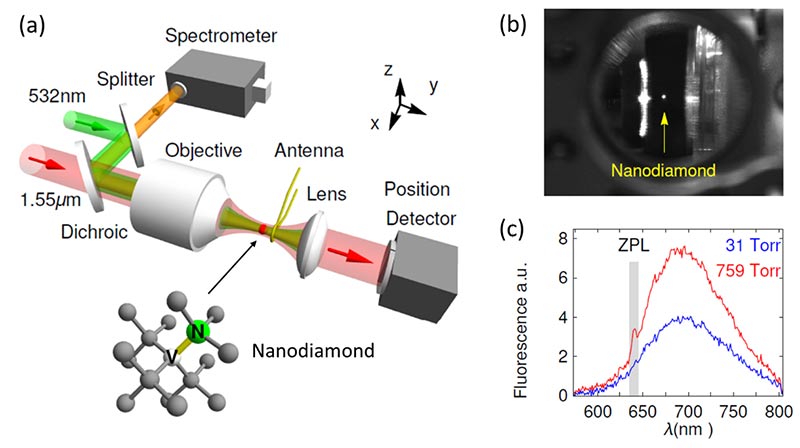Quantum spin-optomechanics of levitated nanodiamonds

Creating large quantum superposition states (Schrödinger’s cat) with massive objects is one of the most challenging goals in quantum mechanics. We have previously achieved an important step of this goal by cooling the center-of-mass motion of a levitated microsphere from room temperature to millikelvin temperatures with feedback cooling [Science, 328, 1673 (2010); Nature Phys. 7, 527 (2011)]. To generate spatial quantum superposition states with an optical cavity, however, requires a very strong quadratic coupling that is difficult to achieve. Recently, we optically levitated nanodiamonds with nitrogen-vacancy (NV) centers in vacuum. We plan to generate large spatial superposition states and arbitrary phonon Fock states using the NV spin-optomechanical coupling with the assistance of a strong magnetic field gradient. The large spatial superposition states can be used to study objective collapse theories of quantum mechanics, which propose that the Schrödinger equation is only an approximate theory that breaks down when objects above a critical mass are delocalized over a critical distance [Phys. Rev. Lett. 107, 020405 (2011), Rev. Mod. Phys. 85, 471 (2013)].
This system will also be great for force sensing. Resonant sensors such as atomic force microscopes (AFM) with high force sensitivity typically consist of nano-fabricated cantilever beams. The achievement of 10-19 N/Hz1/2 sensitivity in cryogenic cantilevers has led to magnetic resonance force microscopy (MRFM) with the sensitivity to detect single electron spins in solids [Nature 430, 329 (2004)]. A levitated nanoparticle in vacuum eliminates the mechanical contact, and thus can have an ultrahigh mechanical quality factor exceeding 1011. Moreover, the mass of a nanoparticle is much smaller than that of nano-fabricated cantilever beam. Thus a levitated nanoparticle in vacuum can have much higher force sensitivity (~10-22N/Hz1/2) than that of conventional AFM’s. It will enable magnetic resonance force microscopy that can detect a single nuclear spin.
Relevant Publications:
T. M. Hoang, J. Ahn, J. Bang, T. Li, "Observation of vacuum-enhanced electron spin resonance of levitated nanodiamonds", preprint: http://arxiv.org/abs/1510.06715 (2015)
P-J Wang, T. Li, C. Noel, X. Zhang, and H. Häffner. "Surface traps for freely rotating ion ring crystals", J. Phys. B: At. Mol. Opt. Phys. 48,205002 (2015)
Z. Yin, N. Zhao, T. Li. "Hybrid opto-mechanical systems with nitrogen-vacancy centers", (invited review paper), Sci. China-Phys. Mech. Astron., 58, 050303 (2015)
M. G. Raizen, T. Li. "The measurement Einstein deemed impossible", Physics Today, 68(1), 56 (2015)